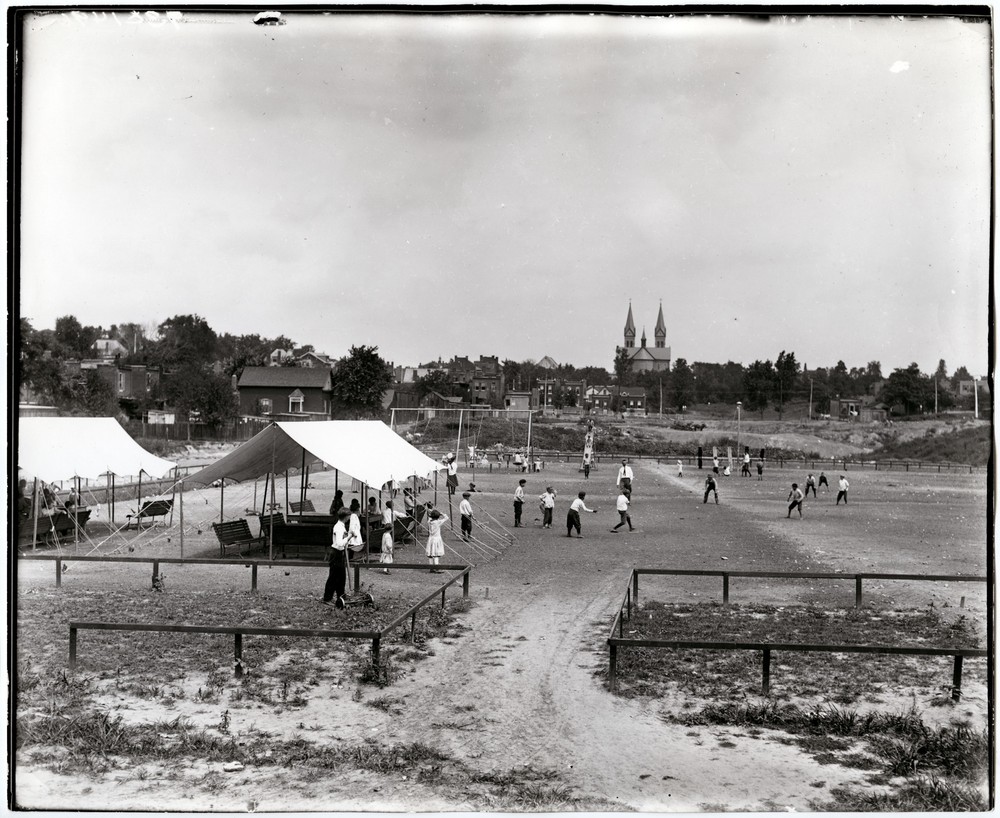Below is an article that was posted November 25, 2016, on the Missouri Historical Society website by Sharon Smith, Curator of Civic and Personal Identity.
This post has been adapted from the 2006 MHM Press title Hidden Assets: Connecting the Past to the Future of St. Louis.
How did corkball get its start? One legend suggests the sport originated in an East St. Louis tavern in the early 1900s when a man began tossing cork-lined bottle caps to another man who whacked at them with a broomstick. Another legend says it began in a Carondelet brewery where workers would pass their lunch breaks carving balls out of cork bungs that plugged holes in beer barrels.

Regardless of how it was born, corkball is great for small groups because the teams aren’t very big. A team usually consists of a pitcher, catcher, outfielder, and possibly a second catcher. The rules of corkball are modified from those of its parent game, baseball. For example, in corkball the pitcher is only 55 feet from the batter (that’s 5½ half feet closer than in baseball), and the game is fast pitch, thrown overhand. A batter is out if he swings and misses the ball and the catcher holds onto it, if he gets two called strikes and the catcher holds onto the ball, if he hits a foul tip that’s caught by the catcher, or if he hits a fly ball that is caught by the pitcher or outfielder. Also, the batter can’t bunt. When the batter gets a hit, there’s a “base runner,” but unlike in baseball the base runner exists only on paper. Every hit is a single, unless otherwise designated by the local field rules, and four hits count as a run. Each subsequent hit counts as another run. A home-run marker is established, and anything hit past the marker is a home run, counting every “runner” on base as well. A game is made up of five innings, and each inning ends after three outs.

The equipment for corkball is a bit different from that of baseball. The ball is much smaller but looks very much like a baseball, down to the sewn leather cover. As for bats, two kinds exist. The regulation bats are made by Spalding or Louisville Slugger and resemble their baseball counterparts, except that the diameter is much smaller. Homemade corkball bats are actually broomsticks, as they were in the original game.

By 1930 corkball had its first organized leagues, and by 1940 it was being played in special corkball cages. Many of these cages were located near taverns, which sponsored league teams. The taverns would even pay the initial fees for installing corkball cages, which back in 1950 varied from $500 to $800. At that time there were 22 enclosed corkball cages in St. Louis. Although corkball cages aren’t seen very often today, corkball is still played around the city in wide-open spaces, such as in the Jefferson Barracks corkball fields and the Tower Grove corkball fields.
- Log in to post comments
 stLouIST
stLouIST